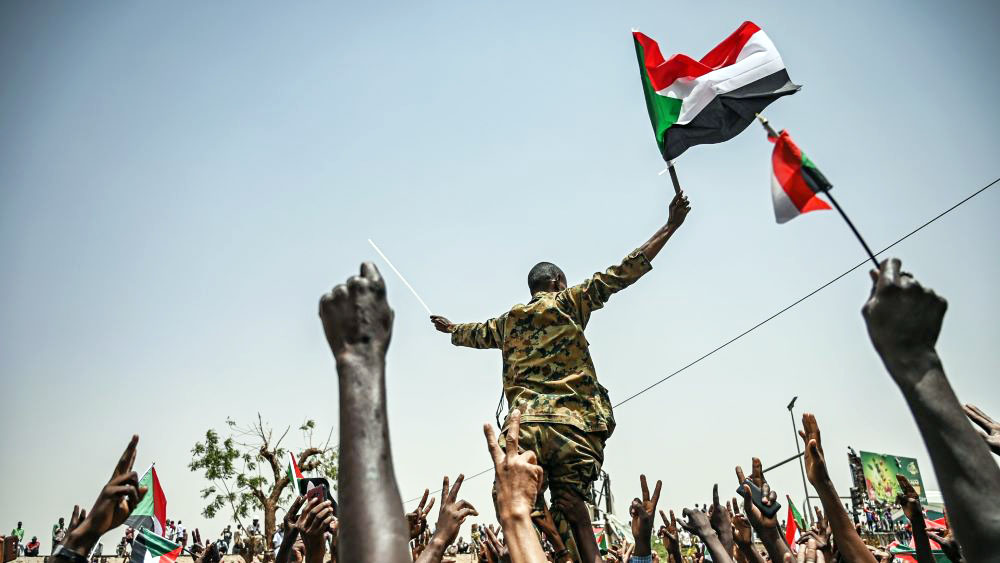
The Sudanese Army: Military Doctrine and the Absence of the State (3)
By Ameer Babiker Abdulla
Under what military doctrine has the Sudanese Armed Forces operated since the overthrow of the al-Ingaz regime?
Since independence, the military doctrine of the Sudanese Armed Forces has found itself caught in the midst of chaos at the state level, with no comprehensive national doctrine. The military entered the post-independence era with its colonial heritage and its history of military operations linked to the comprehensive doctrine of the colonial state, which was rooted in expansion and domination. The Sudanese Armed Forces fought alongside the colonial army in various battlefronts, including with the Allied forces during World War II against the Axis powers.
This era was entered without a national political project to unify the military and guide it into the post-colonial phase. The political leadership was preoccupied with internal conflicts rather than focusing on laying the foundations for building a national state and its inherited institutions. The political leadership wielded power without a comprehensive plan, relying instead on the balance of power between its factions and short-term rivalries that ignored long-term planning. State institutions were managed by civil service leaders who had taken the reins after the "Sudanization" process, following the end of colonial rule. A simple audit of the civil service in Sudan since independence reveals its significant decline over time, with examples such as major projects inherited by the national state—like the Gezira Project, the Sudan Railways, and educational institutions—losing their identity and becoming subject to the political visions of the ruling regimes rather than a sustainable national vision.
Thus, it was natural for the military institution, the most organized and disciplined of state bodies, to seek to shape its military doctrine within this chaos and disorder. This resulted in its role being divided between loyalty to the state and loyalty to the ruling power. At various times, the army adopted different doctrines: it supported national liberation movements, as it was emerging from the colonial era with its strength and vigor; it adopted an Eastern military doctrine during the early years of President Jaafar Nimeiris rule, when the winds of the state were blowing eastward; and then it shifted 180 degrees westward. Eventually, it embraced an Islamic doctrine, which led to the militarization of the populace and eroded the army’s central structure, particularly its hierarchy and discipline, which became subject to ideological rather than military rank.
As a result of this instability, the military institution became aligned with protecting the ruling regime—whether it had come to power through elections or by force of arms—since there was no constitution to protect nor a national project binding it to the state.
With the fall of the al-Ingaz regime, the 2005 Constitution, which had been drafted as part of the Comprehensive Peace Agreement and modified to accommodate South Sudans decision to secede and form an independent state, was rendered obsolete. The 2005 Constitution was also a temporary document, imposed by circumstances, similar to previous temporary constitutions legitimizing the rule of previous regimes, including the al-Ingaz regime before 2005.
Following the ousting of the regime, the Transitional Military Council assumed power in a state without a constitution. On April 13, 2019, General Abdel Fattah al-Burhan issued a "constitutional decree" to form the council, which included seven military officers, the police chief, the deputy head of the security and intelligence service, and the commander of the Rapid Support Forces, who was appointed vice president of the council. They took an "oath of office" before the head of the council. Several more constitutional decrees, which were primarily administrative in nature, followed, leading to the signing of the "Constitutional Document" to govern the country for a four-year transitional period. This document was met with significant opposition from various sectors of the population, indicating continued and escalating conflicts that had previously been suppressed by previous regimes.
Typically, regimes that come to power revert to previous temporary constitutions, starting from the 1956 interim constitution to the amended 2005 constitution, before drafting their own tailored constitutions. This did not happen after the fall of the al-Ingaz regime. As a result, the country found itself without any constitution—neither permanent nor temporary—until the ratification of the "Constitutional Document." This document was reluctantly accepted by some parties, including the "military component," which eventually succumbed to regional and international pressure. It was easy for any party to violate any clause of the document, whether by agreement or force, without hesitation. It was approved with the intention of being breached since it lacked consensus both among the people and the political forces.
Amid the turmoil sparked by the glorious December revolution, which shook the states institutions, and in the absence of a cohesive state, the Sudanese Armed Forces found itself fighting to preserve its privileges without a clear doctrine. It was torn between supporting the revolution and its demands, including the call for the military to "return to the barracks" and assist in rebuilding the state based on a national project that fulfills the aspirations of all, and resisting external and internal pressures to preserve the old legacy and privileges.
The armed forces engaged in limited military battles in the al-Fashaga region to reclaim Sudanese lands under Ethiopian control, while turning a blind eye to the Halayeb and Shalateen triangle. In both cases, the military was merely executing decisions made politically, not militarily. The army, as the spearhead in internal security, found itself in continuous confrontation with revolutionary movements demanding the goals of the revolution, aligning with forces trying to block the revolution’s path—again reflecting political, not military, decisions based on a state doctrine. In reality, Sudan remains a country without an agreed-upon, or even disputed, doctrine at this stage.

